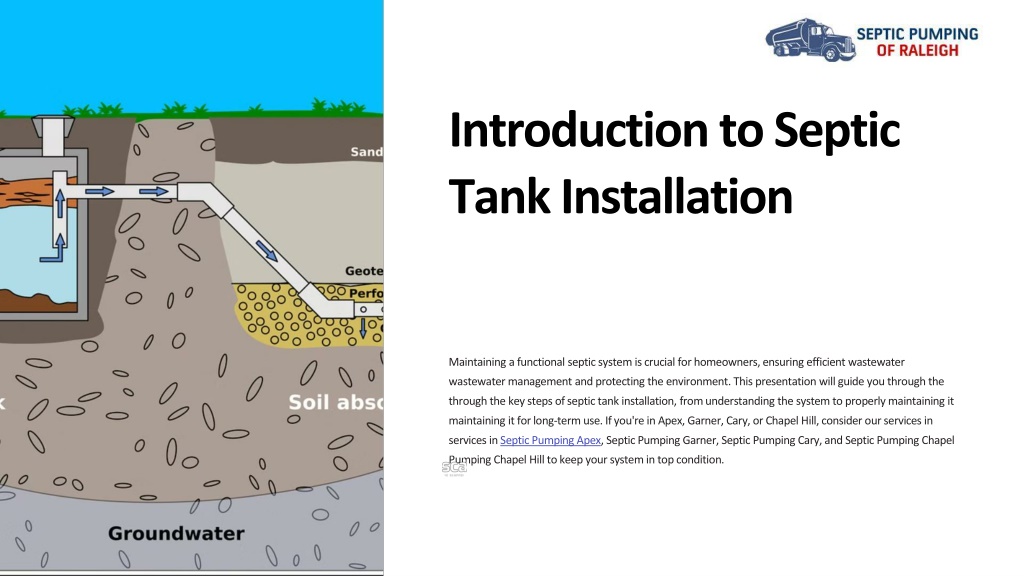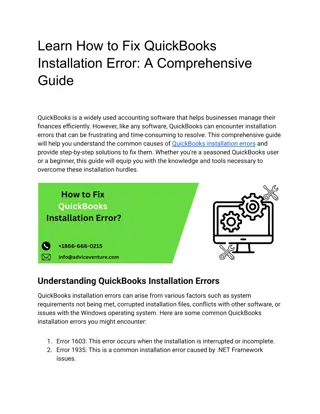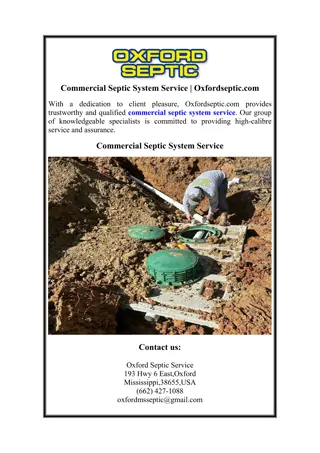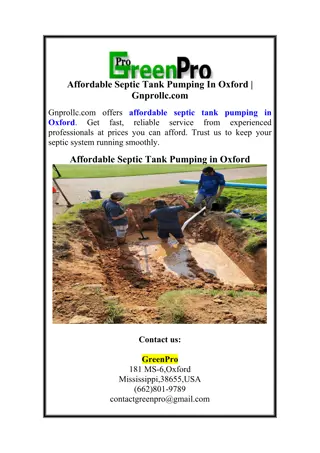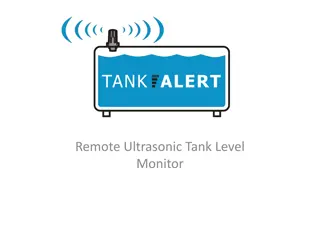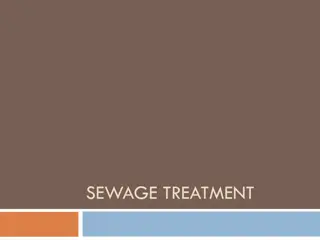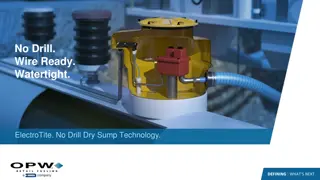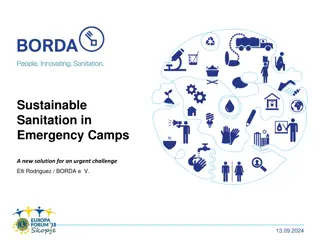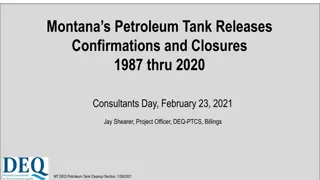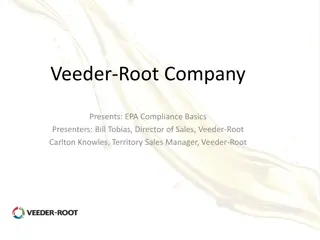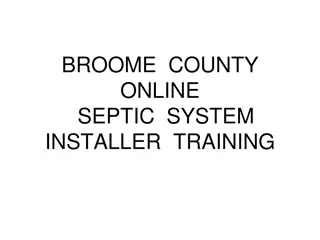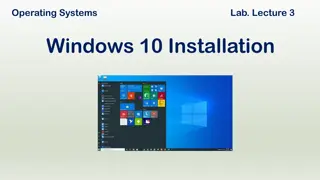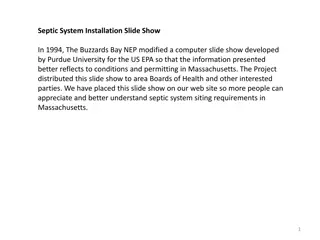Introduction to Septic Tank Installation
We offer all kinds of solutions to meet your needs, whether it's installation, inspection, repair, or maintenance. We are licensed, insured and bonded and we always go above and beyond what is expected with our customers. Then don't hesitate to give us a call! Or visit our website: https:\/\/www.septicpumpingraleigh.com\/
Download Presentation

Please find below an Image/Link to download the presentation.
The content on the website is provided AS IS for your information and personal use only. It may not be sold, licensed, or shared on other websites without obtaining consent from the author.If you encounter any issues during the download, it is possible that the publisher has removed the file from their server.
You are allowed to download the files provided on this website for personal or commercial use, subject to the condition that they are used lawfully. All files are the property of their respective owners.
The content on the website is provided AS IS for your information and personal use only. It may not be sold, licensed, or shared on other websites without obtaining consent from the author.
E N D
Presentation Transcript
Introduction to Septic Tank Installation Maintaining a functional septic system is crucial for homeowners, ensuring efficient wastewater wastewater management and protecting the environment. This presentation will guide you through the through the key steps of septic tank installation, from understanding the system to properly maintaining it maintaining it for long-term use. If you're in Apex, Garner, Cary, or Chapel Hill, consider our services in services in Septic Pumping Apex, Septic Pumping Garner, Septic Pumping Cary, and Septic Pumping Chapel Pumping Chapel Hill to keep your system in top condition.
Understanding Septic Systems 1 2 Septic Tanks Drainage Fields Septic tanks are underground containers The drainage field, or leach field, is a containers that collect and partially treat series of perforated pipes that allow the treat household wastewater before it treated wastewater to slowly seep into it flows into a drainage field. the soil. 3 Biological Processes Septic systems rely on natural biological processes to break down and filter contaminants before the water re-enters the groundwater.
Site Evaluation and Preparation Soil Conditions Site Accessibility Utilities Mapping Assessing the soil type, The installation location must be Carefully mapping underground percolation rate, and slope of the easily accessible for maintenance utilities, such as water lines and land is crucial to ensure proper and servicing, while also adhering electrical cables, is essential to drainage and system function. to local regulations. avoid damage during the installation.
Septic Tank Selection and Sizing Tank Material Tank Capacity Septic tanks are commonly made of concrete, The tank size should be selected based on the fiberglass, or polyethylene, each with its own number of bedrooms in the home and local advantages. regulations to ensure proper wastewater treatment. Inlet and Outlet Baffles Access Risers Baffles help to prevent the discharge of solid waste Risers provide easy access to the septic tank for and maintain the proper flow of wastewater inspection and maintenance. through the system.
Septic Tank Installation Process Excavation 1 The site is excavated to create a level, stable base for the septic tank installation. Tank Placement 2 The septic tank is carefully lowered into the excavated hole and positioned according to specifications. Connections 3 The tank's inlet and outlet pipes are connected to the home's plumbing and the drainage field.
Leach Field Design and Installation Leach Field Layout The drainage field is designed with a network of perforated pipes to disperse the treated wastewater into the soil. Soil Preparation The soil in the leach field is carefully graded and prepared to ensure proper drainage and absorption. Pipe Placement The perforated pipes are installed at the appropriate depth and spacing to evenly distribute the wastewater.
Septic System Maintenance and Inspection Pumping Inspections Water Conservation Record Keeping Regular pumping of the Annual inspections can Maintaining detailed Reducing water usage septic tank is essential to identify any issues or records of maintenance helps to prevent remove accumulated needed repairs to keep and repairs can help with overloading the septic sludge and scum. the system functioning future system system and ensures its properly. management. longevity.
Conclusion and Resources Properly installing and maintaining a septic system is crucial for homeowners to ensure long-term functionality and environmental sustainability. By following the steps outlined in this presentation, you can ensure your septic system operates efficiently and safely. For more information and resources, please visit www.septicpumpingraleigh.com
Contact Us:- Address: 4000 Tryon Rd, Suite 37 Raleigh, NC 27606, Raleigh, NC 27606, Raleigh, NC Phone: 919-364-4154
